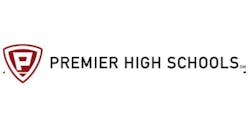Nearly five years after shuttering 50 under-enrolled schools, Chicago once again has to confront the numbers: plummeting enrollment and more than 100 half-empty school buildings, most on the city’s South and West sides.
WBEZ Radio reports that enrollment in Chicago Public Schools has dropped by 32,000 students over the last five years—nearly the same enrollment drop as in the 10-year period leading up to the closures of 50 elementary schools in 2013.
This enrollment decline continues as the district's self-imposed five-year moratorium on school closings ends in 2018.
The school system must announce by Dec. 1 any proposed closures for its more than 600 schools. Officials have already indicated they will recommend closing only a handful of schools for next year, the first without the moratorium.
But there’s little doubt that the district must deal with a major enrollment and space utilization problem. A WBEZ analysis of school records found:
- Enrollment at 190 Chicago schools have dropped by more than 100 students since the 2013 closings.
- The number of under-enrolled school buildings in Chicago remains the same as in 2013, just before closings. In 2015 — the last time the district generated an underutilized school building list — some 313 schools were considered underutilized. That nearly matches the number just before the mass closings, when 329 schools were considered under-enrolled.
- Since 2015, enrollment has dropped by another 25,000 students to 371,000. Among the schools deemed underutilized in 2015, more than 170 have lost at least 30 students.
- Even schools that took in displaced students during the 2013 closings have lost enrollment. Forty-one of the city’s 48 so-called “welcoming" schools have lost 40 or more students since 2014; almost 30 schools have lost more than 100.
The district has contributed to its capacity problems by greenlighting new schools in recent years.
Since 2013, Chicago has opened 39 new schools serving 16,000 students; 29 of them serve high school students.
When the district closed 50 schools in 2013, high schools were spared amid fears that consolidations could spur violence among students forced to cross gang lines.
As a result, high schools are among the most underutilized campuses. Seventeen have fewer than 270 students. That's the bare minimum the district says it needs to offer basic programming. In 2013, only seven high schools had fewer than 270 students.
Students in these schools often must take online courses in order to graduate and must go without things like full-time gym and art teachers.
Across the city, 15 high schools and 12 elementary schools face a triple threat: less than 300 students, half-empty buildings and are poor academic ratings—factors that have historically put schools at risk of being closed.
Despite the moratorium, Chicago has shut down 19 schools since 2013. About half were charter schools that lost their contracts because of poor performance or bad financial management. Charter schools were not subject to the moratorium.
Four other schools have been closed for what is called “zero enrollment.” Using this method, the district stops assigning students to a school. Then, when no students are left, it votes to close the school.
Some advocates of neighborhood schools fear zero enrollment closings could become more frequent in the coming years as the district moves to a new high school application system. Starting this year, all eighth-graders are applying through a common application. They rank their choices and then are matched with their highest pick.
If no students match with a particular high school, it could end up with “zero enrollment,” critics contend.


